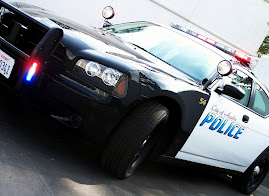
Every once in a while, someone asks a question about fighting a speeding ticket. The first question I ask is, "How did the Officer catch you?" A friend of mine brought up the topic last week after getting cited by the CHP for speeding...laser. My best advice...traffic school.
Officers are required to attend certified training on use of a radar or laser device prior to conducting speed enforcement with those tools. Daily, the Officer checks that the equipment is properly functioning through a series of internal and external tests, depending on the device. That monitoring of the equipment continues throughout the tour of duty. Both devices are used to confirm the Officer's visual observation. The individual device is tested and checked for proper calibration by a certified technician annually or every three years depending on policy and law.
Every situation is different and there are many factors in play when it comes to a speeding ticket.
CVC 40802 defines "
speed trap" and gives requirements for speed surveys, roadway widths, Officer and equipment certification and more. A citation based on a "pace" does not fall under these guidelines. In my experience, a pace is based on the Officer's observation, distance, speed and should be by use of a speedometer that has been checked for calibration. A "pace" is basically fancy term for following you at a given speed.
Without getting technical,
radar sends out a cone shaped beam that bounces off a target. Many factors can influence the speed return such as distance, size and speed of the objects, weather, roadway conditions and other factors. Radar has been around for a long time, is tested and is reliable. However, use of a radar requires the Officer to continuously monitor the conditions and base the speed return on his/her visual observations. The radar unit will display speed only, it does not measure distance. The Officer's testimony should include their observations as well as a tracking history.
The
laser or LIDAR device is far more vehicle specific than the radar. The laser delivers a very narrow beam that is directed/
aimed at a specific vehicle (pictured above). The device will display both the speed of the vehicle as well as the distance that the reading was obtained. A speed laser device is extremely accurate when used properly.
Most Officers will "lock" in the speed return on the device display. You may ask to see the equipment and most Officers will take the time to not only show you, but also explain the use of the device to you.
If you receive a citation, you have several ways to take care of the ticket;
- Paying the fine at the court, by mail, or on-line depending on the jurisdiction.
- Contesting the citation (Fighting the ticket) in person or by use of the "Trial by Declaration" (written) process.
- Attending "Traffic School". You will still pay a fine, but the citation is dismissed with no point on your driving record.
Paying the citation is your worst option in my opinion. You are out the fine and it is an automatic point on your record. Contesting the citation on a speeding ticket is difficult. If you lose, it is a fine and a point. If you plan on appearing; do your homework, be certain of your case, dress and act professionally, don't argue, don't get overly technical, but do present a well thought out defense. Most courts will not allow attending traffic school after trial. If you plan on fighting the cite in hopes that the Officer does not show up...it is a role of the dice. Our personnel are subject to discipline if they fail to show in court. Traffic school is the safest route, although you still pay the fine, your license is spared the point.
Like I told my friend, if you truly believe that you are correct and the Officer has erred or is wrong, contest the citation. Otherwise, my best advice...traffic school.






2 comments:
which type of laser is used by the arcadia police? is it pro laser III?
That would be the one...
Post a Comment